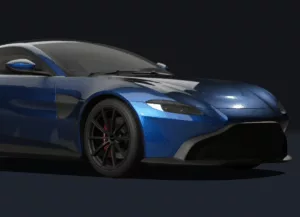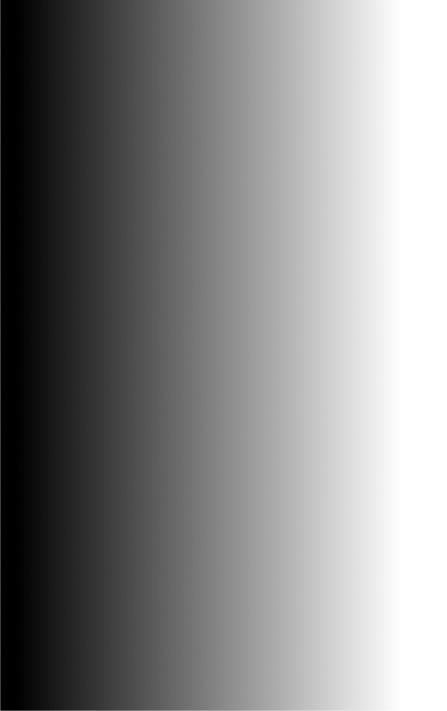2025 Oklahoma Tint Laws: What You Need to Know Before You Tint with TERMINAX
Oklahoma Tint Laws: 2025 Tinting Guidelines and How TERMINAX Keeps You Street Legal
Tinting your car windows is one of the simplest ways to upgrade the look and feel of your vehicle. It enhances privacy, reduces heat, and adds a level of comfort that drivers quickly come to appreciate. But if you live in Oklahoma—or travel through it often—it’s essential to know that not all tints are allowed.
Every state in the U.S. sets its own tinting rules, and Oklahoma enforces specific limits that all drivers must follow. In this article, we’ll explore exactly what Oklahoma tint laws require, what mistakes to avoid, and why TERMINAX window tint is the smart choice for staying compliant without sacrificing performance or style.

The Practical Need for Tinting in Oklahoma
Oklahoma is known for its diverse weather conditions—from blazing summer heat to sudden winter glare off snowy roads. For many drivers, window tinting becomes less of a luxury and more of a necessity.
Some of the most common reasons drivers choose window tint include:
- Protecting the interior: Tint reduces UV exposure, preventing fading and cracking of seats, dashboards, and other interior surfaces.
- Blocking harmful rays: It shields occupants from harmful ultraviolet rays, reducing health risks and sun damage.
- Reducing glare: Tint minimizes glare from the sun and headlights, improving visibility and comfort while driving.
- Lowering cabin temperature: Tinted windows keep the interior cooler, reducing reliance on air conditioning.
- Increasing personal and family privacy: Darker windows help protect passengers and valuables from prying eyes.
But with these benefits come regulations. Oklahoma’s tint laws are in place to ensure road safety, particularly for the visibility of law enforcement and nighttime driving.
Breaking Down the 2025 Oklahoma Window Tint Law
Tint laws are based on Visible Light Transmission (VLT), a measurement that indicates how much light can pass through your tinted windows. The higher the percentage, the lighter the tint.
These are the VLT limits currently enforced in Oklahoma:
For Passenger Vehicles (Sedans):
- Windshield: Non-reflective tint is allowed above the manufacturer’s AS-1 line or the top 5 inches.
- Front Side Windows: Must allow at least 25% of light in.
- Rear Side Windows: Must also allow 25% or more light in.
- Rear Window: Must allow at least 25% light through.
For SUVs and Vans (Multipurpose Vehicles):
- Windshield: Same rule as for sedans—tint only allowed on the top 5 inches or above the AS-1 line, and it must be non-reflective.
- Front Side Windows: Minimum VLT of 25%.
- Rear Side Windows and Rear Window: No VLT restrictions. These can be tinted darker than those on passenger vehicles.
Oklahoma allows more flexibility on the rear windows of SUVs and vans, which is ideal for families or commercial drivers seeking additional privacy for passengers or cargo.
What Oklahoma Law Says About Tint Reflectivity and Color
Beyond darkness, window film must also follow rules regarding reflectivity and color:
- Reflectivity: The window film must not be more than 20% reflective. This helps prevent excessive glare on the roads and keeps vehicles visible to others.
- Color: Oklahoma law prohibits red and amber colored tint films, particularly because they can resemble emergency vehicle lighting or impair visibility.
Drivers who choose tints outside these standards may be stopped and cited, even if their VLT percentage is legal.
Tint Labels and Manufacturer Requirements
Every tinted vehicle in Oklahoma is required to have a manufacturer’s compliance label installed between the tint and the window glass. This label must clearly show:
- The name of the manufacturer
- The VLT percentage of the film
- Confirmation that the film meets Oklahoma’s legal standards
It’s a detail many DIY installers overlook, but law enforcement will check for it, especially during traffic stops or vehicle inspections.
Legal Consequences of Non-Compliant Tint
Installing tint that violates Oklahoma law can lead to several consequences:
- Traffic citations: Law enforcement may issue a fine if your tint is too dark, overly reflective, or lacking the required label.
- Failed inspections: Vehicles must pass inspection to remain registered, and illegal tint can result in a failed inspection.
- Inconvenience and cost: You’ll often be required to remove the tint or have it replaced with a legal version, which costs time and money.
Repeat offenders may face increased penalties. That’s why it’s critical to work with brands and installers who know the law, like TERMINAX.
Why Oklahoma Drivers Trust TERMINAX for Legal Tinting
TERMINAX isn’t just a window tint brand—it’s a compliance-focused solution for modern drivers. Here’s how TERMINAX helps Oklahoma drivers stay safe, cool, and legal.
Films Specifically Made for State Regulations
TERMINAX manufactures window tint films with VLT levels tailored to meet legal requirements across the U.S., including Oklahoma’s 25% front window minimum. Whether you’re tinting a sedan or an SUV, TERMINAX has options that align with your vehicle and your needs.
Reliable Labeling and Certification
TERMINAX provides proper labeling with every film installation, including the necessary compliance stickers for Oklahoma state law. This ensures that your car not only looks good but is also documented as legal.
Expert Installation by Certified Technicians
Partnering with certified installers across Oklahoma, TERMINAX ensures each installation is done professionally, without bubbles, peeling, or misapplication. These technicians are trained to understand legal limits and help you choose the right tint based on your vehicle type and usage.
Films That Last and Perform
Oklahoma’s extreme seasonal weather means your tint must stand up to both high heat and freezing cold. TERMINAX films resist fading, cracking, and discoloration while maintaining visual clarity and high UV protection over time.
Health and Medical Exemptions in Oklahoma
Oklahoma law allows certain medical exemptions for individuals with light-sensitive conditions, such as:
- Lupus
- Melanoma
- Albinism
- Photosensitivity from medications
To apply for an exemption:
- Obtain a physician’s signed statement outlining your condition.
- Submit it to the Oklahoma Department of Public Safety.
- Keep the exemption certificate in your vehicle at all times.
Even with a medical exemption, certified film and compliant labeling are still required.
Choosing the Right Tint for Your Driving Needs
If you spend most of your time in the Oklahoma sun or frequently drive long distances, consider these factors when selecting tint:
- UV protection rating: TERMINAX films block up to 99% of UV rays.
- Infrared heat rejection: Keeps your cabin cooler in summer.
- Glare reduction: Useful for early morning and late-day driving.
- Privacy level: Choose darker rear tints for cargo or child passenger areas (SUVs, vans).
- Warranty coverage: TERMINAX provides long,term protection against material defects.
How to Stay Compliant and Confident with Your Tint
Follow these tips to ensure your vehicle remains within Oklahoma’s legal tint standards:
- Work with a certified TERMINAX installer familiar with Oklahoma law
- Verify that the tint’s VLT is at or above the legal threshold for your vehicle type
- Ensure your tint has the required compliance label
- Keep receipts and documentation for warranty and law enforcement purposes
- If medically exempt, store your paperwork in your glove box at all times
Final Thoughts
Window tinting is a smart, affordable way to upgrade your vehicle—but only if it’s done legally. Oklahoma tint laws are designed to balance privacy and style with safety and visibility.
By choosing TERMINAX, you gain access to a line of tint films built around legal compliance, long-term durability, and real performance. Whether you’re shielding your cabin from the hot Oklahoma sun or adding a finishing touch to your ride, TERMINAX offers a legal, lasting solution.


